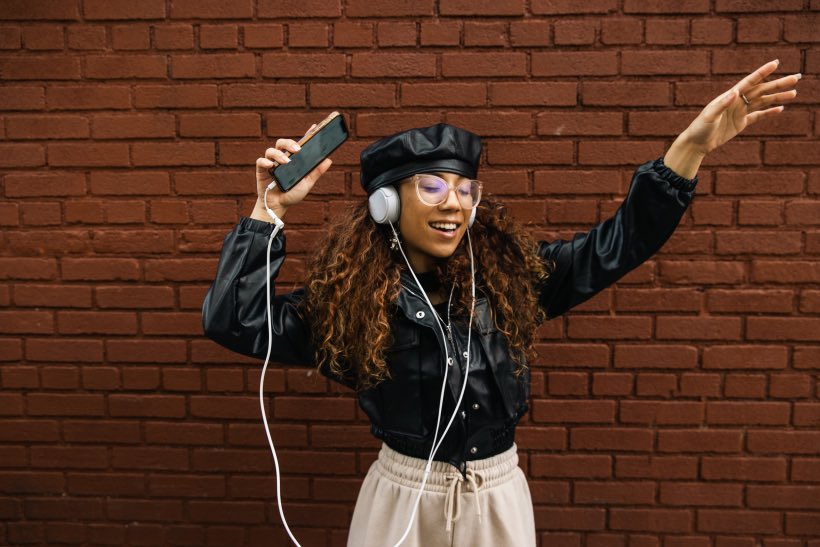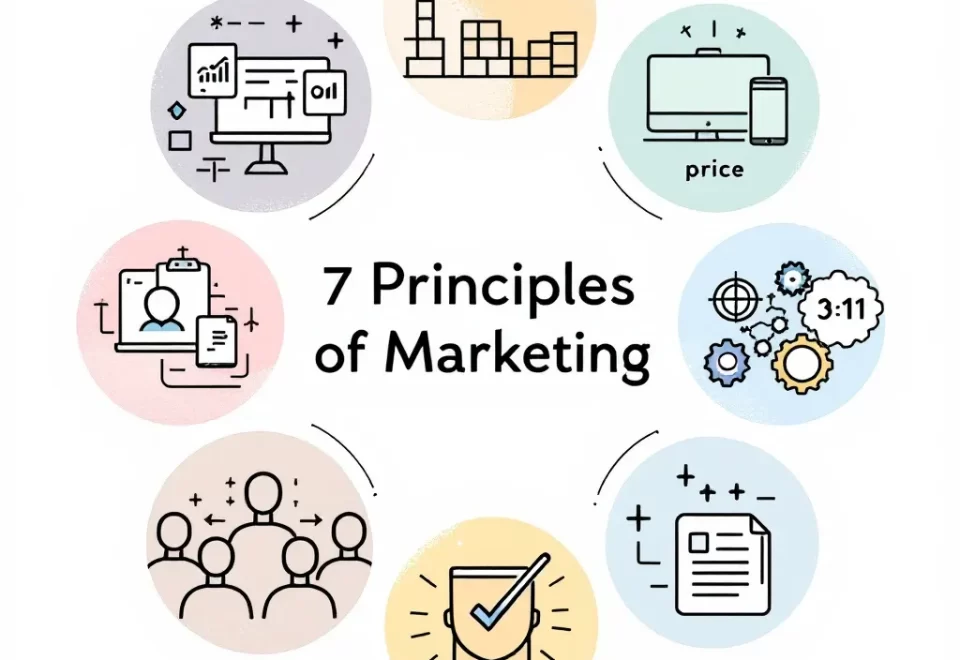Today, staying relevant isn’t just about posting content – it’s about creating meaningful connections through trending elements. One of the most powerful yet underutilized strategies to boost your online presence is leveraging popular music in your posts.
Platform algorithms favor content that incorporates trending sounds, making your posts more likely to appear on Explore pages and For You feeds. When you align your content with current music trends, you’ll tap into a broader audience base and create emotional connections that drive engagement. Studies show that posts featuring trending audio generate much higher engagement rates through likes, shares, and comments compared to those without trending elements. So, let’s learn more about how to use music trends and real-life examples of those who succeeded in it!
Evolution of Music Trends in Social Media
Social media platforms continuously adapt their features to enhance music discovery and engagement opportunities. These evolutionary changes shape how content creators connect with their audiences and distribute their content effectively.
The Rise of Short-Form Music Content
Short-form videos dominate social media engagement metrics across platforms. Breaking down full-length music videos into 15-30-second clips in Dubs.io or another platform generates higher viewer retention rates. Such bite-sized content segments include:
- Behind-the-scenes studio clips
- Song snippet previews
- Instrumental highlights
- Quick performance reels
- Music creation process clips
AI-Generated Music and Ultimate Personalization
AI technology transforms music creation and distribution on social platforms. The AI music market projects a $47.5 billion growth in the next 3 years, with a 32.32% CAGR. Key AI innovations include:
- Custom background tracks for social content
- User behavior-based playlist generation
- Smart music recommendation engines
- Automated sound-mixing tools
Live Streaming and Virtual Concerts
Virtual performances create global reach opportunities through social platforms. Recent data shows:
Platform | Performance Metrics |
50% increase in music stream views | |
75% growth in artist collaborations | |
Virtual Events | 65% of fans interested in online concerts |
Social Audio and Podcast Integration
- Clubhouse’s Music Mode for enhanced audio quality
- X Spaces’ dedicated music category (40% conversation increase)
- LinkedIn’s beta audio events (30% music industry focus)
- Social audio rooms engaging 62% of Gen Z and Millennial users
Ready to ride the music trends for social media marketing and boost your online presence?
Contact Growth Hackers
How to Develop a Content Strategy for Integrating Music Trends
1. Content Diversification
Adding a song to Instagram isn’t enough. Your social media presence thrives on a mix of content types that incorporate trending music. So create interactive polls about current music trends, share behind-the-scenes footage with popular soundtracks, or develop music-themed challenges that encourage audience participation. You can also mix educational content like music production tips with entertaining elements such as dance challenges or lip-sync performances.
2. Trend Monitoring and Implementation
Track music trends across platforms using built-in discovery tools and analytics. Focus on TikTok’s Discover page, Instagram Reels’ trending sounds, and industry-specific hashtags to identify emerging music patterns. Also, monitor engagement metrics to understand which music styles resonate with your audience:
Content Type | Average Engagement Rate |
Dance Challenges | 5.2% |
Lip-Sync Videos | 4.8% |
Behind-the-Scenes | 3.9% |
Tutorial Content | 3.5% |
3. Content Timing and Scheduling
Time your music-trend content strategically to maximize visibility and engagement. This means that you need to post when your target audience is most active and align content with peak trending periods for specific songs. Also, create a content calendar that balances trending music with evergreen content to maintain consistent engagement while capitalizing on current trends.
4. Encouraging Audience Participation
Encourage user-generated content through music-based challenges, contests, or duets. You can also design interactive elements that prompt viewers to create their own versions using trending songs. Include clear calls-to-action in your posts:
- Create remixes of trending songs
- Share dance interpretations
- Submit vocal covers
- Participate in sound effect challenges
5. Platform-Specific Optimization
Adapt your music trend strategy for each social platform’s unique features:
- Instagram: Focus on Reels with trending audio
- TikTok: Utilize duet chain opportunities
- YouTube: Create shorts with popular music clips
- Facebook: Share live music sessions
- Twitter: Post music snippets with trending topics
Growth Framework: Beat-Driven Engagement Tactics
1. Social media content performance relies on the systematic analysis of audience data. Conducting regular content audits reveals which music-related formats generate the highest engagement rates. Track metrics like shares, comments, and likes for live performances, behind-the-scenes content, and fan Q&As to identify top-performing content pillars.
2. Demographic segmentation uncovers distinct audience preferences based on age, location, and interests. Create targeted content clusters that resonate with specific fan segments – younger audiences engage 3x more with interactive music challenges while older demographics prefer longer-form educational content about music production techniques!
3. Interactive elements boost engagement rates by 65% compared to static posts. Incorporate polls about upcoming releases, quizzes about music history, and live Q&A sessions about your creative process. These participatory formats transform passive followers into active community members.
Content Type | Engagement Rate |
Live Q&As | 8.2% |
Music Polls | 6.5% |
Tutorial Content | 5.4% |
Behind-the-scenes | 4.8% |
4. Educational content establishes authority while providing value. Share practical insights through:
- Production technique breakdowns with audio examples
- Songwriting tips focused on specific genres
- Music business guidance on streaming promotion
- Industry trend analysis with data visualization
5. Monitor emerging platform features to identify growth opportunities. Test innovative formats like:
- Short-form vertical music videos
- Collaborative sound creation tools
- Cross-platform audio-sharing options
- Live music streaming capabilities
6. Partner with music marketing specialists to optimize your social strategy through:
- Advanced analytics interpretation
- Performance benchmark tracking
- Audience insight development
- Content optimization recommendations
The Real Case Studies of Successful Integration of Music Trends
Spotify’s Viral Marketing Campaign
Spotify’s Wrapped campaign demonstrates exceptional music trend integration across social media platforms. The annual campaign generates 60 million shares on social media platforms by transforming user listening data into shareable personalized content. Each customized story features 8-10 slides highlighting individual music preferences and statistics presented through vibrant graphics optimized for Instagram Stories.
TikTok Dance Challenge Success
The #SavageChallenge exemplifies effective music trend utilization, reaching 15.7 billion views. Megan Thee Stallion’s song “Savage” spawned 31 million TikTok video creations during March 2020. The challenge succeeded by combining simple choreography with a catchy 15-second music clip, leading to a 300% increase in stream numbers across music platforms.
Instagram Reels Music Integration
Nike’s #PlayNew campaign leveraged trending music in Instagram Reels, generating 7.2 million views across 250 creator posts. The campaign incorporated 5 popular songs from emerging artists, matched with athletic content. This strategic music selection resulted in a 48% higher engagement rate compared to their standard posts.
Brand-Artist Collaboration Impact
Metric | Before Campaign | During Campaign | Increase |
Engagement Rate | 2.3% | 8.7% | 278% |
Follower Growth | 5K/month | 22K/month | 340% |
Content Shares | 1.2K/post | 4.8K/post | 300% |
Comment Volume | 850/post | 3.2K/post | 276% |
Integrating Professional Music
LinkedIn’s “Sound of Success” series demonstrates professional content music integration, earning 125,000 engagements. The series features 60-second business tips set to trending background music, resulting in 45% higher view completion rates. Similarly, Facebook’s live music events generate 3x more comments than standard video posts with an average watch time of 12 minutes per session.
Sync your content with music trends for social media marketing today!
How to Forecast Music Trends?
Music trend forecasting combines data analytics with platform insights to predict emerging audio patterns that drive social media engagement.
Upcoming Audio Developments
AI-powered music creation tools generate 47% more user interactions compared to traditional audio content. Leading platforms integrate features like:
- Auto-tuning algorithms for voice enhancement in Reels
- Stem separation technology for remixing popular tracks
- Dynamic beat-matching for seamless transitions
- Smart audio filters customized by genre
- Cross-platform sound synchronization tools
Platform Feature Evolution
Social platforms update their music integration capabilities every 3-4 months to maintain user engagement. Current developments include:
- Instagram’s expanded music library with a 60-second clip selection
- TikTok’s advanced sound recognition system
- YouTube Shorts’ automatic beat detection
- Facebook’s spatial audio for live performances
- Twitter’s voice effect suite for Spaces
Audience Preference Shifts
Platform analytics reveal distinct changes in audio consumption patterns across demographics:
Age Group | Preferred Format | Engagement Rate |
13-17 | Short remixes | 8.2% |
18-24 | Mashups | 7.5% |
25-34 | Original sounds | 6.3% |
35+ | Classic tracks | 4.8% |
Analyze the Performance of Your New Content
Performance analysis reveals actionable insights about your music-focused social media content. Regular monitoring of specific metrics enables data-driven decisions for content optimization.
Key Metrics to Consider
Track these essential performance indicators to measure your music content’s effectiveness:
- Audience Growth Rate: Monitor follower increases or decreases across 30-day periods
- Engagement Rate: Calculate interactions (likes, comments, shares) divided by total followers
- Reach Metrics: Track unique viewers exposed to your music-related content
- Click-through Rate: Measure link clicks to external music platforms or websites
- Sound Usage: Count the number of times others use your original audio
- Watch Time: Record average viewing duration for music-based video content
- Share Velocity: Track how quickly your music posts spread within the first 24 hours
Tools for Performance Analysis
Leverage these analytical platforms to gather comprehensive performance data:
- Native Analytics: Access platform-specific insights through Creator Studio Instagram Insights
- Social Listening Tools: Monitor music-related conversations and brand mentions
- Competitor Analysis: Compare performance against similar accounts in your niche
- Audience Intelligence: Gather demographic data, content preferences, and peak activity times
- Trend Tracking: Identify emerging music patterns with viral sound potential
- Cross-Platform Analytics: Consolidate metrics from multiple social networks
Tips for Adjusting Your Strategy
Performance data guides strategic refinements to enhance engagement. So:
- Focus content adjustments on high-performing elements identified through analytics.
- Test different music formats, posting times, and content types to optimize results.
- Implement A/B testing for music selection, caption styles, and visual elements to determine optimal combinations.
- Monitor seasonal trends, platform updates, and algorithm changes to adapt your approach accordingly.
- Extend successful music formats into series.
- Modify underperforming content elements.
- Incorporate trending sounds into existing content types.
- Optimize posting schedules based on peak engagement times.
- Adapt content length based on retention metrics.
Closing Words on How to Leverage the Power of Music Trends for Social Media Marketing
Staying ahead of music trends on social media isn’t just about jumping on the latest viral sound – it’s about creating meaningful connections with your audience. Your success lies in the perfect blend of trending music, authentic content, and strategic timing.
Remember that music has the power to spark emotions and create lasting memories. By leveraging platform tools, monitoring performance metrics, and adapting to your audience’s preferences, you’ll build a stronger, more engaged community.
Now it’s your turn to put these strategies into action. Start small experiments often and watch your social media presence transform as you tap into the universal language of music to connect with your followers.
Growth Hackers is a performance-focused social media marketing agency helping businesses from all over the world grow. There is no fluff with Growth Hackers. We help entrepreneurs and business owners unlock the power of music trends for social media marketing, increase their productivity, generate qualified leads, optimize their conversion rate, gather and analyze data analytics, acquire and retain users and increase sales. We go further than brand awareness and exposure. We make sure that the strategies we implement move the needle so your business grow, strive and succeed. If you too want your business to reach new heights, contact Growth Hackers today so we can discuss about your brand and create a custom growth plan for you. You’re just one click away to skyrocket your business.








